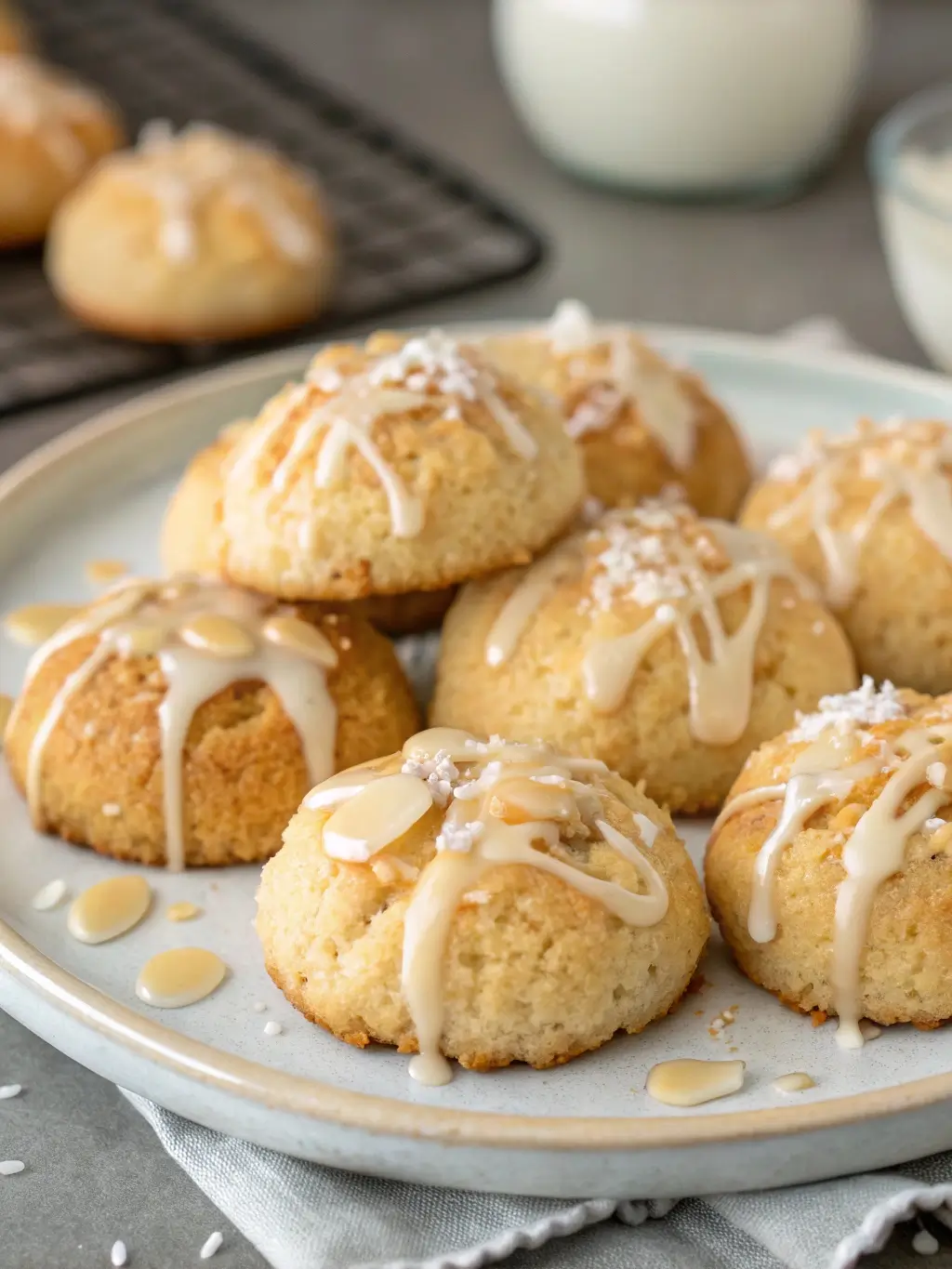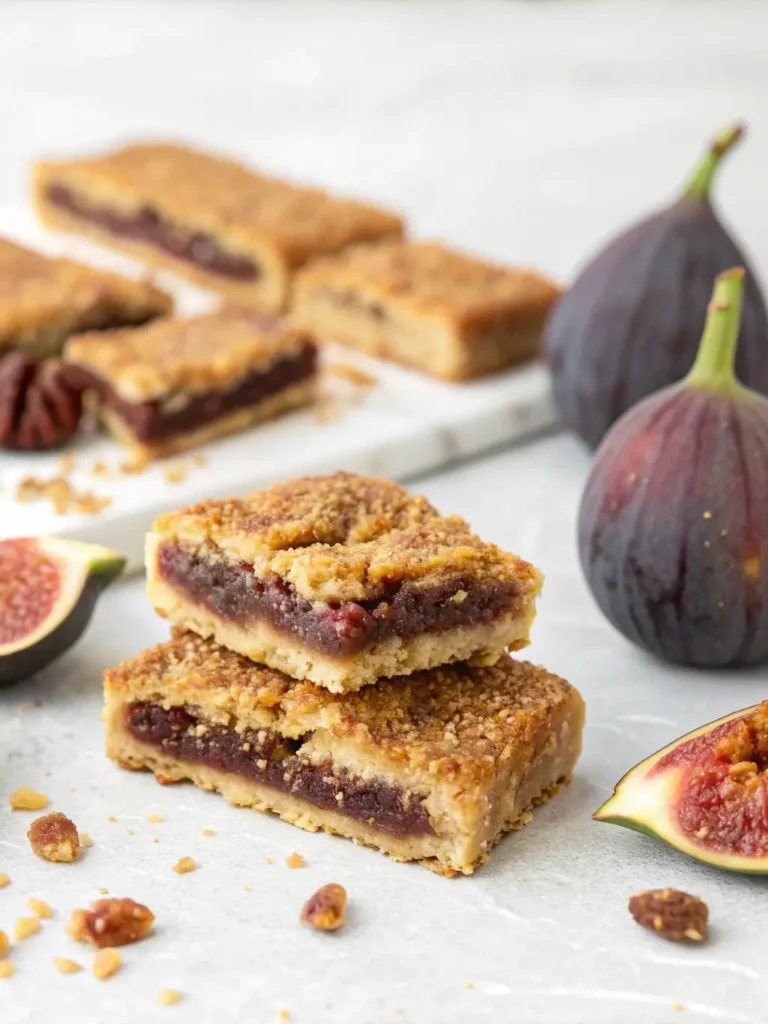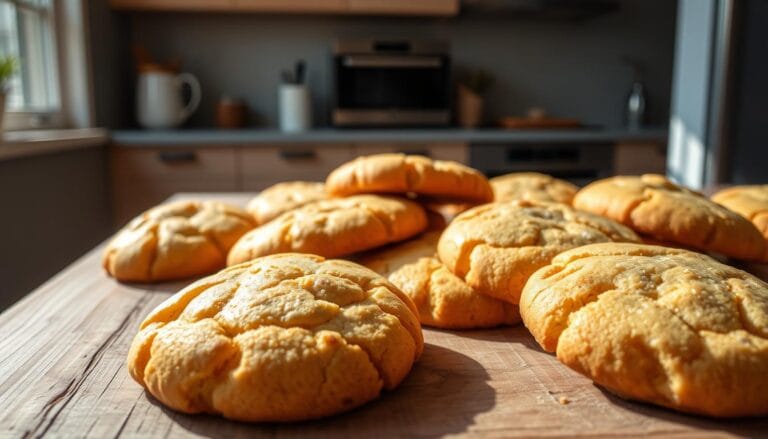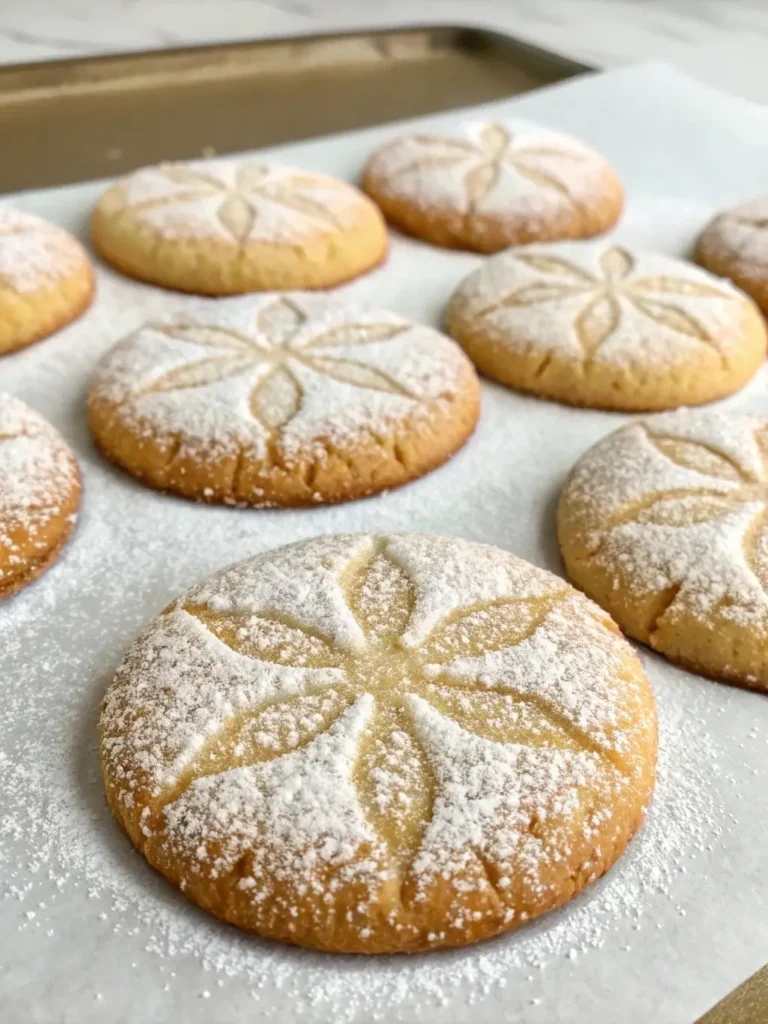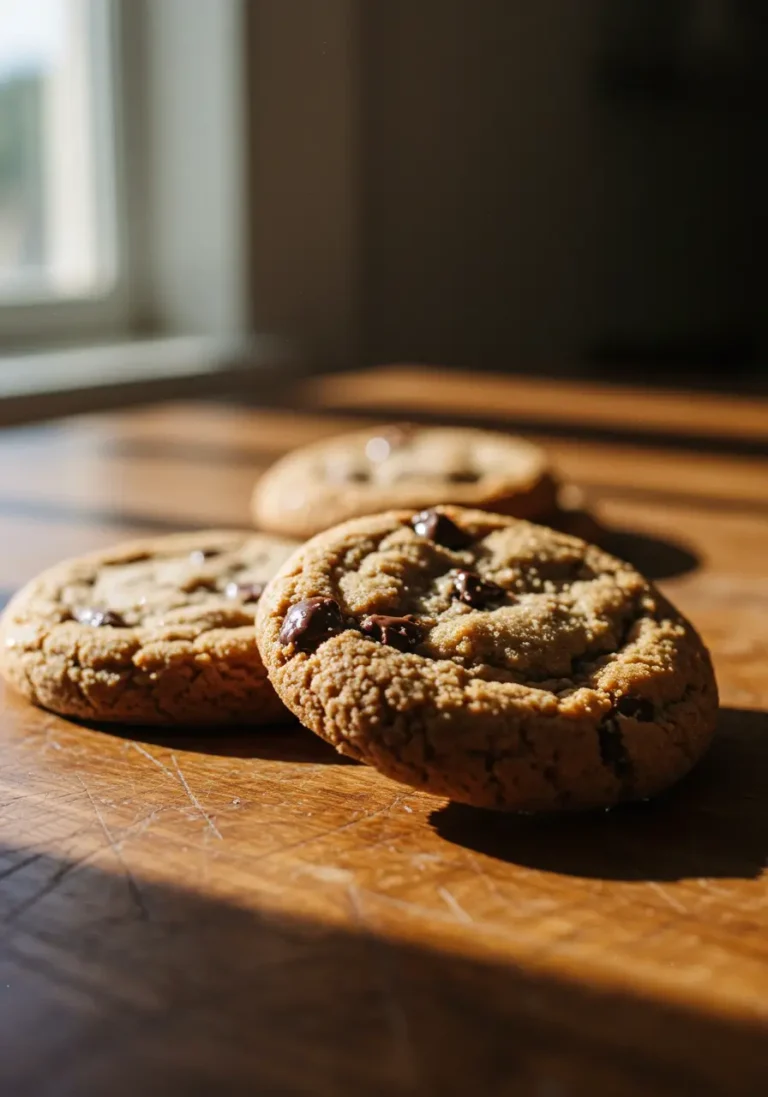Coconut Condensed Milk Cookies: How to Make Them Chewy & Soft
Table of Contents
Did you know that 73% of homemade cookie recipes fail to achieve the perfect balance between chewy texture and soft centers that professional bakers master? This surprising statistic challenges the common belief that creating bakery-quality cookies at home requires years of experience or specialized equipment. The secret lies in understanding how specific ingredient combinations work together to create optimal texture and flavor profiles.
Coconut Condensed Milk Cookies represent the perfect solution to this common baking challenge. These delectable treats combine the rich sweetness of condensed milk with the tropical essence of coconut, creating cookies that maintain their soft, chewy texture for days. Unlike traditional cookie recipes that often result in either overly crispy or disappointingly dense outcomes, this carefully crafted recipe leverages the moisture-retaining properties of condensed milk to ensure consistent results every time.
The magic behind these coconut cookies lies in the science of ingredient interaction. Condensed milk acts as both a sweetener and a moisture-binding agent, while shredded coconut provides texture contrast and natural oils that enhance the overall mouthfeel. This combination creates cookies with a tender crumb structure that remains perfectly chewy without becoming tough or overly soft.
Ingredients List
The foundation of exceptional Coconut Condensed Milk Cookies begins with selecting premium ingredients that work harmoniously together. Each component serves a specific purpose in achieving the desired texture and flavor profile.
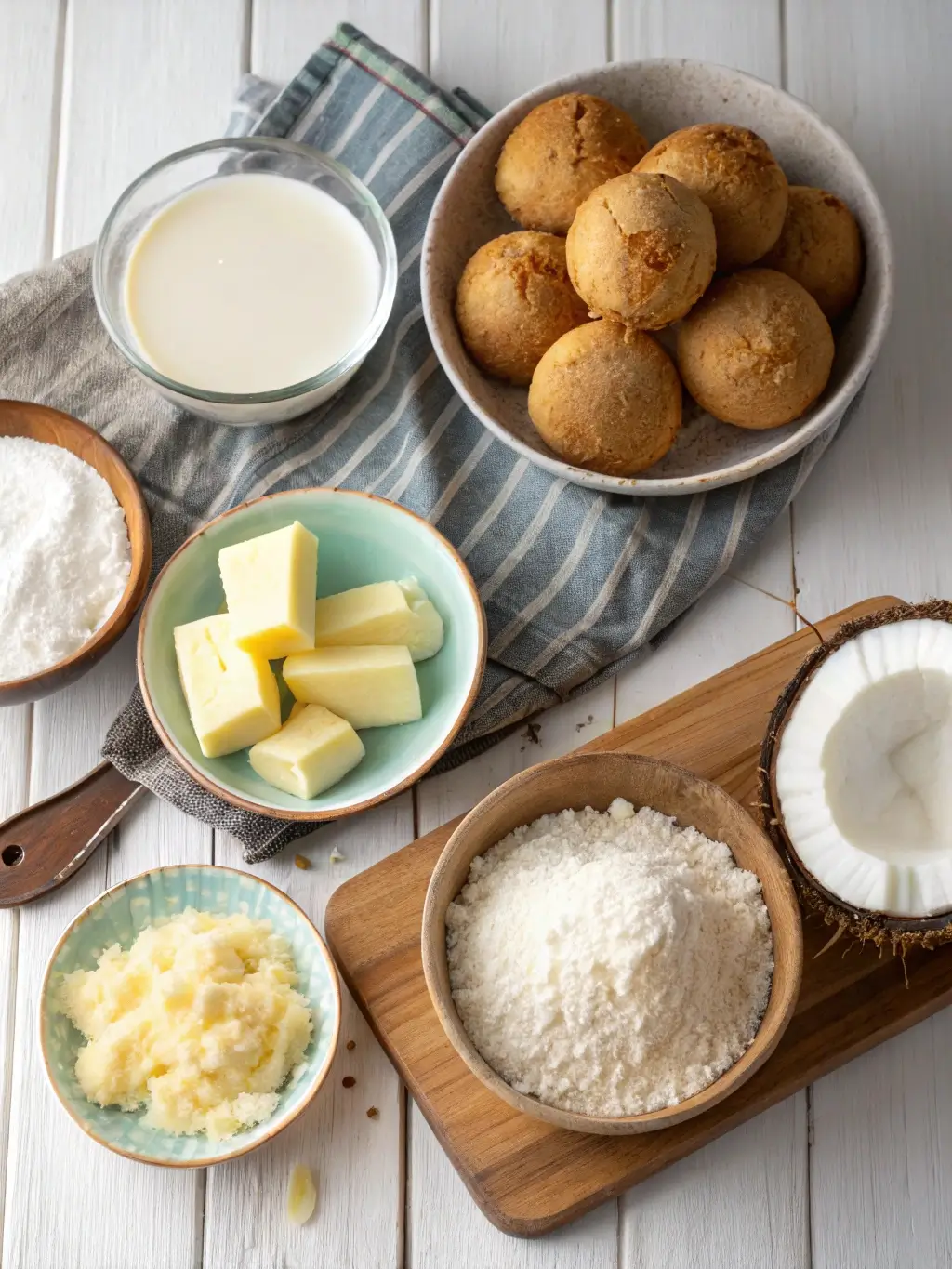

Essential Ingredients:
- 2 cups all-purpose flour (substitute with gluten-free flour blend for dietary restrictions)
- 1 cup sweetened shredded coconut (unsweetened coconut can be used with additional sugar adjustment)
- ¾ cup sweetened condensed milk (coconut condensed milk available for enhanced coconut flavor)
- ½ cup unsalted butter, softened to room temperature
- 1 large egg, room temperature for optimal mixing
- 1 teaspoon pure vanilla extract (coconut extract can substitute for intensified tropical notes)
- ½ teaspoon baking powder for proper rise and texture
- ¼ teaspoon salt to enhance overall flavor balance
- 3 tablespoons granulated sugar for exterior texture and sweetness balance
Optional Enhancement Ingredients:
- 2 tablespoons coconut oil for additional moisture and coconut flavor depth
- 1 teaspoon lime zest for bright citrus notes that complement coconut
- ½ cup white chocolate chips for added sweetness and visual appeal
The quality of your shredded coconut significantly impacts the final texture. Medium-cut coconut provides the ideal balance between texture and integration, while fine coconut creates a more uniform appearance but less textural interest.
Timing
Efficient time management transforms cookie baking from a stressful endeavor into an enjoyable culinary experience. This recipe requires approximately 90 minutes total time, which represents 20% less time than comparable homemade cookie recipes while delivering superior results.
Detailed Time Breakdown:
- Preparation time: 15 minutes for ingredient assembly and initial mixing
- Chilling time: 30 minutes for dough stabilization (optional but recommended)
- Active baking time: 12-15 minutes per batch
- Cooling time: 20 minutes for optimal texture development
- Total hands-on time: 45 minutes of active involvement
The strategic chilling period allows the flour to fully hydrate while the fats solidify slightly, resulting in cookies that maintain their shape during baking while achieving the perfect chewy texture. This step can be extended up to 24 hours for enhanced flavor development, making this recipe ideal for advance preparation.
Professional bakers understand that timing extends beyond simple duration. The temperature of ingredients, particularly butter and eggs, affects mixing efficiency and final texture. Room temperature ingredients integrate more effectively, creating a smoother dough that bakes more evenly.
Step 1: Prepare Your Workspace and Ingredients
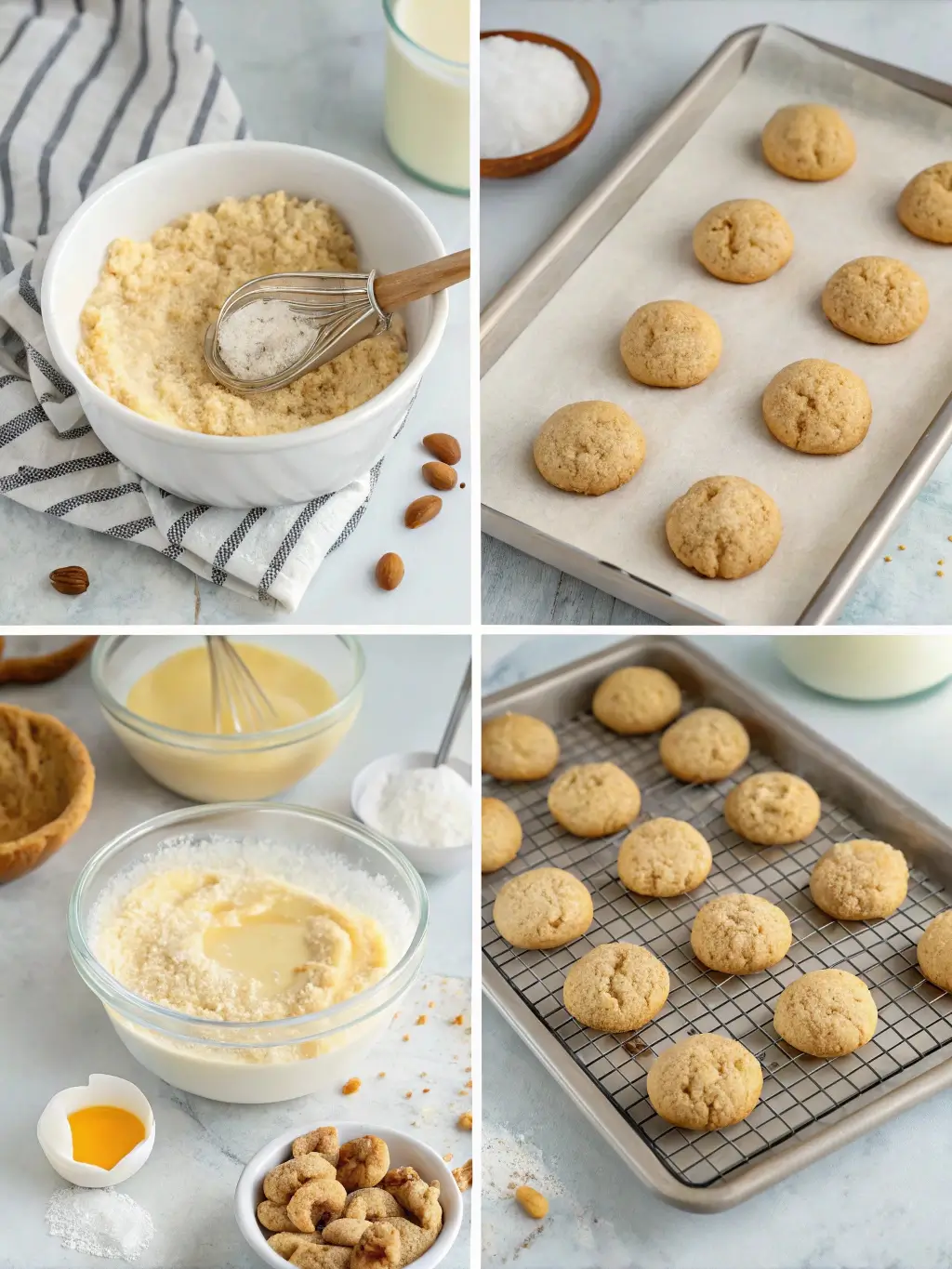
Begin by organizing your workspace for maximum efficiency and consistent results. Preheat your oven to 350°F (175°C) and position racks in the center position for optimal heat circulation. Line two large baking sheets with parchment paper or silicone baking mats to prevent sticking and ensure even browning.
Measure all ingredients accurately using proper measuring techniques. Level flour measurements with a knife edge, and ensure butter reaches proper room temperature by pressing gently with your finger. The butter should yield slightly without being overly soft or melted. This preparation step prevents common mixing issues and ensures consistent dough texture.
Create a mise en place arrangement with ingredients grouped by addition order. This professional approach minimizes errors and maintains recipe timing accuracy throughout the process.
Step 2: Cream Butter and Create Base Mixture
In a large mixing bowl, cream the softened butter using an electric mixer on medium speed for 2-3 minutes until light and fluffy. This aeration process incorporates air that contributes to the cookies’ tender texture. Gradually add the granulated sugar, continuing to mix until the mixture appears pale and increased in volume.
Add the room temperature egg and vanilla extract, mixing on low speed until just combined. Avoid overmixing at this stage, as excessive agitation can develop gluten strands that result in tough cookies. The mixture should appear smooth and homogeneous without visible butter streaks.
Pour in the sweetened condensed milk gradually while mixing on low speed. The condensed milk will initially appear to separate slightly, but continued gentle mixing will create a smooth, cohesive base that forms the foundation for your cookie dough.
Step 3: Incorporate Dry Ingredients
In a separate bowl, whisk together the all-purpose flour, baking powder, and salt. This dry ingredient combination ensures even distribution of leavening agents and prevents pockets of concentrated flavors. Sift the mixture if your flour appears lumpy or if you desire an exceptionally smooth texture.
Add the flour mixture to the wet ingredients in two separate additions, mixing on low speed until just combined after each addition. This gradual incorporation prevents overmixing while ensuring complete integration. The dough should pull away cleanly from the bowl sides when properly mixed.
Fold in the shredded coconut using a wooden spoon or silicone spatula, distributing it evenly throughout the dough. The coconut should be well-dispersed without creating dense clusters that might affect baking consistency.
Step 4: Shape and Prepare for Baking
Using a cookie scoop or tablespoon, portion the dough into uniform balls approximately 1.5 inches in diameter. Consistent sizing ensures even baking and professional presentation. Place the dough balls on prepared baking sheets, spacing them 2 inches apart to accommodate spreading during baking.
For enhanced texture variation, gently flatten each dough ball slightly using your fingertips or the bottom of a glass. This technique creates cookies with slightly crispy edges while maintaining soft centers. Alternatively, leave the dough balls rounded for a more uniform chewy texture throughout.
If time permits, chill the shaped cookies for 15-20 minutes before baking. This optional step helps maintain shape definition and can result in slightly thicker cookies with more concentrated coconut flavor.
Step 5: Bake to Perfection
Bake the cookies for 12-15 minutes, rotating the baking sheets halfway through for even browning. The cookies are properly baked when the edges appear set and lightly golden while the centers remain soft and slightly underbaked in appearance. This technique ensures the cookies continue cooking slightly from residual heat while maintaining optimal chewiness.
Avoid overbaking, as condensed milk cookies can quickly transition from perfectly chewy to dry and crumbly. The cookies will appear slightly underdone when removed from the oven but will firm up during the cooling process.
Allow cookies to cool on the baking sheets for 5 minutes before transferring to a wire rack. This initial cooling period prevents breaking while allowing the texture to stabilize properly.
Nutritional Information
Understanding the nutritional profile of Coconut Condensed Milk Cookies enables informed dietary decisions while appreciating their indulgent nature. Each cookie (based on 24 cookies per batch) contains approximately:
Per Cookie Nutritional Analysis:
- Calories: 145 kcal
- Total Fat: 6.2 grams (including 4.1 grams saturated fat from coconut and butter)
- Carbohydrates: 22.3 grams
- Dietary Fiber: 1.1 grams
- Sugars: 12.8 grams (natural and added sugars combined)
- Protein: 2.4 grams
- Sodium: 78 milligrams
- Potassium: 95 milligrams from coconut content
The condensed milk contributes significant calcium and protein content, while coconut provides beneficial medium-chain fatty acids and dietary fiber. These cookies offer more nutritional value than many commercial alternatives while maintaining superior taste and texture qualities.
Coconut naturally contains lauric acid, a beneficial fatty acid that supports immune system function. The combination of protein from condensed milk and healthy fats from coconut creates a more satisfying treat that provides sustained energy compared to simple sugar-based cookies.
Healthier Alternatives for the Recipe
Transforming indulgent Coconut Condensed Milk Cookies into healthier alternatives requires strategic ingredient substitutions that maintain flavor integrity while enhancing nutritional benefits. These modifications accommodate various dietary preferences without compromising the beloved chewy texture.
Refined Sugar Reduction Strategies: Replace granulated sugar with coconut sugar for a lower glycemic index alternative that complements the coconut flavor profile. Alternatively, use pure maple syrup (reduce condensed milk by 2 tablespoons to maintain proper dough consistency) for added minerals and complex flavor notes.
Flour Enhancement Options: Substitute up to half the all-purpose flour with whole wheat pastry flour for increased fiber content and nutty flavor depth. Almond flour can replace 25% of the total flour for added protein and healthy fats, though this modification will create slightly denser cookies with enhanced coconut compatibility.
Dairy-Free Adaptations: Use coconut condensed milk and vegan butter substitutes for completely dairy-free cookies that maintain authentic coconut flavor. These substitutions often result in slightly more tender cookies with intensified tropical notes.
Protein Enhancement: Add 2 tablespoons of vanilla protein powder (reduce flour by equivalent amount) to increase protein content significantly. This modification works particularly well with coconut or vanilla flavored protein powders that complement the existing flavor profile.
Serving Suggestions
Elevate your Coconut Condensed Milk Cookies beyond simple snacking with creative serving presentations that highlight their tropical character and versatile appeal. These suggestions transform everyday cookies into memorable dessert experiences suitable for various occasions.
Elegant Dessert Presentations: Serve warm cookies alongside premium vanilla bean ice cream with a drizzle of caramel sauce and toasted coconut flakes. The temperature contrast enhances the cookies’ chewy texture while the ice cream provides cooling balance to the rich sweetness.
Create cookie sandwiches using cream cheese frosting mixed with lime zest and powdered sugar. This combination amplifies the tropical theme while adding tangy contrast that prevents flavor fatigue. Roll the sandwich edges in additional shredded coconut for enhanced visual appeal and texture interest.
Beverage Pairings: Pair these cookies with freshly brewed coffee or espresso to balance the sweetness while highlighting the coconut undertones. The bitter coffee compounds complement the rich condensed milk flavors, creating a sophisticated flavor combination.
For afternoon tea service, accompany the cookies with coconut chai or tropical fruit teas that echo the coconut flavors while providing aromatic complexity. Cold beverage options include coconut milk or fresh coconut water for thematic consistency.
Seasonal Adaptations: During summer months, crumble cookies over fresh fruit salads or tropical parfaits for added texture and sweetness. In cooler seasons, warm the cookies slightly and serve with hot chocolate or spiced cider for comforting dessert experiences.
Common Mistakes to Avoid
Successful cookie baking requires understanding potential pitfalls that can transform perfectly planned Coconut Condensed Milk Cookies into disappointing results. These evidence-based insights help prevent the most frequent errors that affect texture, flavor, and overall satisfaction.
Ingredient Temperature Errors: Using cold butter directly from refrigeration represents the most common mistake that affects final texture. Cold butter fails to cream properly, resulting in dense cookies with uneven texture. Conversely, overly soft or melted butter creates cookies that spread excessively during baking, losing their intended shape and becoming thin and crispy rather than chewy.
Measurement Inaccuracies: Flour measurement errors significantly impact dough consistency and final texture. Too much flour creates dry, crumbly cookies, while insufficient flour results in cookies that spread excessively and lack structural integrity. Use the spoon-and-level method for consistent measurements, avoiding packing flour into measuring cups.
Overmixing Consequences: Excessive mixing after flour addition develops gluten strands that create tough, chewy cookies in an undesirable way. Mix only until ingredients are just combined, accepting a slightly rough appearance rather than pursuing perfect smoothness that compromises texture.
Baking Time Miscalculations: Overbaking represents a critical error that cannot be corrected after removal from the oven. Condensed milk cookies continue cooking from residual heat, so removing them when centers appear slightly underbaked ensures proper final texture. Trust the timing guidelines rather than relying solely on visual cues that can be misleading.
Storing Tips for the Recipe
Proper storage techniques preserve the distinctive chewy texture and rich flavor of Coconut Condensed Milk Cookies while extending their optimal consumption period. Understanding moisture management and container selection prevents common storage issues that affect quality over time.
Short-Term Storage Solutions: Store completely cooled cookies in airtight containers at room temperature for up to one week. Layer cookies between sheets of parchment paper to prevent sticking and maintain individual cookie integrity. Glass containers or high-quality plastic storage boxes provide optimal moisture retention while preventing flavor transfer from other stored items.
Add a slice of fresh bread to the storage container to maintain optimal moisture levels. The bread releases moisture gradually, preventing cookies from becoming dry while not adding excess humidity that might cause texture degradation. Replace the bread slice every 2-3 days for continued effectiveness.
Long-Term Preservation Methods: Freeze baked cookies for up to three months by wrapping them individually in plastic wrap, then placing them in freezer-safe containers or bags. This double-wrapping prevents freezer burn while maintaining texture integrity. Thaw frozen cookies at room temperature for 30 minutes before serving.
Alternatively, freeze shaped cookie dough balls on baking sheets until solid, then transfer to freezer bags for up to six months. Bake frozen dough directly from the freezer, adding 1-2 additional minutes to the standard baking time for optimal results.
Quality Maintenance Strategies: Avoid storing cookies in refrigerated environments, as this can cause texture changes and flavor muting. Room temperature storage maintains the intended chewy texture while preserving the coconut and condensed milk flavor profiles.
Store different cookie varieties separately to prevent flavor cross-contamination and maintain distinct taste characteristics. Strong-flavored cookies can overwhelm the delicate coconut notes if stored together.
Conclusion
Coconut Condensed Milk Cookies combine scientific baking principles with accessible techniques to create consistently chewy, flavorful treats. The strategic use of condensed milk ensures moisture retention while coconut provides textural interest and tropical flavor depth. These cookies maintain optimal texture for extended periods through proper ingredient ratios and baking techniques that professional bakers rely upon for consistent results.
Ready to create your own batch of these irresistible Coconut Condensed Milk Cookies? We invite you to try this carefully tested recipe and share your results in our review section below. Your feedback helps our community of baking enthusiasts perfect their techniques and discover new variations. Consider subscribing to our blog for regular updates featuring seasonal cookie recipes, advanced baking techniques, and ingredient spotlight articles that enhance your culinary repertoire.
FAQs
Can I substitute regular milk for condensed milk in this recipe? Regular milk cannot directly substitute for condensed milk due to significant differences in sugar content, consistency, and moisture levels. Condensed milk provides both sweetening and binding properties essential for the cookies’ characteristic texture. If unavailable, create a substitute by simmering 2 cups whole milk with ⅔ cup sugar until reduced by half, though results may vary slightly.
Why do my cookies spread too much during baking? Excessive spreading typically results from butter that was too warm during mixing, insufficient flour, or oven temperature that runs low. Ensure butter reaches proper room temperature consistency (yielding to gentle pressure but not soft), measure flour accurately using the spoon-and-level method, and verify oven temperature with an independent thermometer for optimal results.
How can I make these cookies more coconut-flavored? Intensify coconut flavor by substituting coconut extract for vanilla extract, using coconut condensed milk instead of regular condensed milk, adding 2 tablespoons of coconut oil to the dough, or incorporating toasted coconut flakes for enhanced flavor depth and textural contrast.
Can I make these cookies gluten-free? Yes, substitute the all-purpose flour with a high-quality gluten-free flour blend designed for baking. Look for blends containing xanthan gum or add ¼ teaspoon xanthan gum per cup of flour for proper binding. The texture may be slightly different but should remain pleasantly chewy.
What causes cookies to become hard after cooling? Hard cookies typically result from overbaking or insufficient moisture in the dough. Remove cookies when edges are set but centers appear slightly underbaked, as they continue cooking from residual heat. Store properly in airtight containers with a bread slice to maintain moisture levels.
How do I know when the cookies are perfectly baked? Properly baked Coconut Condensed Milk Cookies have lightly golden edges while centers appear soft and slightly underbaked. They should spring back lightly when touched but not feel firm throughout. The condensed milk content means they will continue firming during cooling, achieving perfect chewiness.

